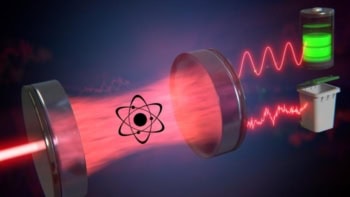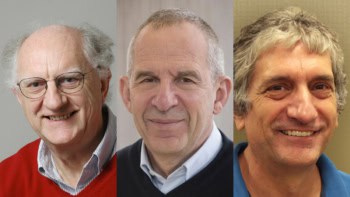A group of physicists at the Massachusetts Institute of Technology in the US has observed evidence for coherent matter-wave amplification in a Bose-Einstein condensate - a crucial process for an "atom laser" - for the first time. An atom laser could produce a coherent beam of atoms all moving with the same speed in the same direction - just like the photons from a laser. Atom lasers could have a major impact on fields such as atom lithography, atom optics and precision measurements.
Bose-Einstein condensation itself was only observed for the first time in 1995. There has been intense interest in the process ever since because of the unique quantum behaviour displayed by matter in the condensate, and because of the possibility of building an atom laser. Just as a conventional laser relies on the stimulated emission of photons from atoms, an atom laser relies on “bosonic stimulation” for the amplification of matter waves. Hans-Joachim Miesner and colleagues publish their evidence for such stimulation in Science this week (279 1005-1007). Bose-Einstein condensation (BEC) was first predicted by Albert Einstein and Satyendra Nath Bose in 1924. To produce a Bose-Einstein condensate in the laboratory it is necessary to trap and cool a gas to atoms to a fraction of a degree above absolute zero. The MIT team uses laser cooling and a magneto-optical trap. When the gas is cold enough, the de Broglie wavelength of the atoms is comparable with the inter-atom spacing and they all collapse or “condense” into the same quantum state. In the MIT experiment a gas of sodium atoms is cooled to just above the temperature for the onset of BEC, and then suddenly quenched to below the transition temperature. By following the formation of the condensate with a non-destructive imaging technique, and comparing the experimental data with a series of theoretical models, the team observe evidence for bosonic stimulation. Miesner and colleagues find that the condensate actually grows more quickly than predicted by theory and think that this might be due to saturation phenomenon. “The condensate growth might be limited by the supply of thermal atoms [atoms not in the condensate state] which are locally depleted by the presence of large condensate fractions” he says. It is also possible that improvement in both theory and experiment will be needed to resolve the difference, he suggests. Miesner says that since the work was submitted to Science, the group has confirmed their results using a more sophisticated analysis technique. But, he adds, “the question about the build-up of coherence during the formation remains to be unresolved.”



